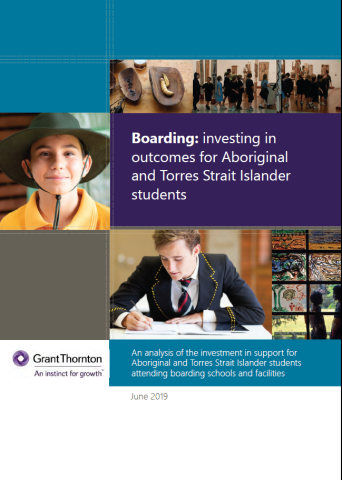Analysis of the investment in support for Indigenous secondary boarding students
NIAA is leading work to identify and address issues faced by Aboriginal and Torres Strait Islander secondary students who study away from home. In December 2017, the Department of the Prime Minister and Cabinet (PM&C) released a report on Commonwealth Government support for these students and the gaps in support and service delivery, Study Away Review: Review of Support for Aboriginal and Torres Strait Islander Secondary Students Studying Away From Home (Study Away Review).
Following the Study Away Review, PM&C requested an independent analysis of the existing investment in support for Aboriginal and Torres Strait Islander secondary students attending boarding. The purpose of this analysis was to:
- improve the understanding of the benefits and impacts of existing investments in boarding provision,
- improve the understanding of how government investment (both state and federal) in boarding provision and support services for remote Aboriginal and Torres Strait Islander secondary students can be best used by boarding providers,
- inform continued benefits of the program and improved educational outcomes,
- provide baseline information for future monitoring and policy development.
This report builds on previous reviews and reports into boarding for Aboriginal and Torres Strait Islander students with the aim of improving the understanding of the benefits and impacts of the existing investment in boarding provision. In addition, it examines how government investment (both state/territory and Commonwealth) in boarding provision and support services for Aboriginal and Torres Strait Islander secondary students can be best used by boarding providers to develop sustainable and effective models of boarding delivery and achieve improved educational outcomes.
Twenty‑seven Aboriginal and Torres Strait Islander boarding providers, providing boarding for approximately 1,900 Aboriginal and Torres Strait Islander secondary students, were analysed for this report. The findings were compared against 23 mainstream boarding providers.
